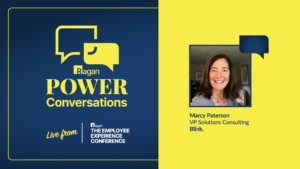How internal communications teams actively listen to employees
Uncover the truth behind employee engagement with active listening and VoE data.

When it comes to understanding employee engagement and satisfaction, Voice of Employee (VoE) data takes center stage. Capturing the thoughts, emotions and experiences of your workforce can uncover insights that shed light on factors that influence their commitment to productivity. The truth lies in the alignment between company culture and employee expectations. Workloads, retention rates, productivity, innovation and HR efficiency are all crucial elements of a healthy company culture.
According to recent findings by Gartner®, “Interest in expanding data sources to measure and understand worker activities and sentiment has grown significantly since the beginning of the COVID-19 pandemic.” We believe primarily due to the adoption of working from home, companies needed ways to keep tabs on the work, without being able to see them in the office.
“The overall cost and risk of collecting and processing more data on employee activity and sentiment can outweigh the benefits from the generated insights,” warns Gartner. Instead, the research explores human-centric approaches to measurement, with the intent to continuously improve the structures, policies, interventions and support mechanisms put in place to positively impact employee productivity, experience and wellbeing.
Active listening is a human-centered approach to gathering data, a central tenet of emotional intelligence, and helps build trust and rapport while avoiding employee backlash to monitoring. Often, active listening can be performed by managers or using specialized focus groups. Such information will then supplement and provide better context to the computer-generated employee activity and sentiment data.
At PoliteMail, some of our favorite non-intrusive metrics to measure employee email behavior include:
- Reach: the number and percentage of your employee audience paying attention to your communications.
- Readership: the number of employees actively reading and investing time into those messages.
- Engagement: a combination of email readership levels and click behavior over time.
Measuring employee activity over time helps establish baselines and trends.
What is active listening?
Active listening is essentially giving your full attention to someone when they speak and seeking to understand their perspective without judgment or interruption. The aim is to understand the essential meaning behind what someone is saying, not simply their literal words. The intentional practice of active listening involves good eye contact, non-verbal cues, asking open-ended questions, paraphrasing back to them and listening to comprehend rather than respond.
Such listening may sound intuitive, but in practice, it’s challenging to perform and difficult to master.
What does active listening involve?
One approach under the umbrella of ‘active listening’ is for managers to practice reflective listening, where one seeks to understand an individual’s ideas and emotions and reflect those thoughts back to them. Reflective listening may look like this: “It sounds like you’re overwhelmed by this project and the upcoming deadlines. Tell me more about [X].” Or “It seems like you’re disappointed about [Y]. Why is that?” These statements acknowledge the employee’s emotions, and the open-ended question prompts them to share more. By paraphrasing back to the speaker what you heard, the listener communicates they are genuinely interested in understanding what was shared instead of simply reacting to it. Follow-up questions can then help the speaker clarify their message to ensure it is understood and interpreted correctly.
Using active listening to inform employee data collection
The monitoring of who is doing what, measuring what is getting done, and monitoring the quality of the work is a critical part of organizational management, and it should be utilized and presented in a way that improves employee experience without feeling intrusive or oppressive. In addition to production, leadership must understand what employees say and, more importantly, what they feel.
An active listening strategy can work both ways to enable discussions of how and why your organization collects and uses data. Conversations between leadership, internal comms and employees will inform the application of this strategy moving forward and seek to answer questions like the following:
- What data do we want to collect? And why? What will we do with the data?
- How and when can we anonymize employee data and still be useful?
- Will we allow employees to opt into (or out of) certain data collection?
- How will we share data with employees?
- How will we use employee feedback to make changes?
According to Gartner, “Employee digital footprints generate a lot of data from which you can infer employees’ productivity, satisfaction with their experience and well-being. But you will only ever see a part of the picture.” To understand the employee experience more fully, it’s essential to pair human-centered data collection methods with personal active listening, where you’ll learn not only what employees say but how they feel.
COMMENT
Ragan.com Daily Headlines
RECOMMENDED READING
How focusing on DEX can improve list segmentation
Tags: active listening






